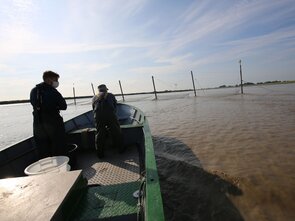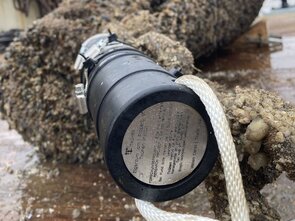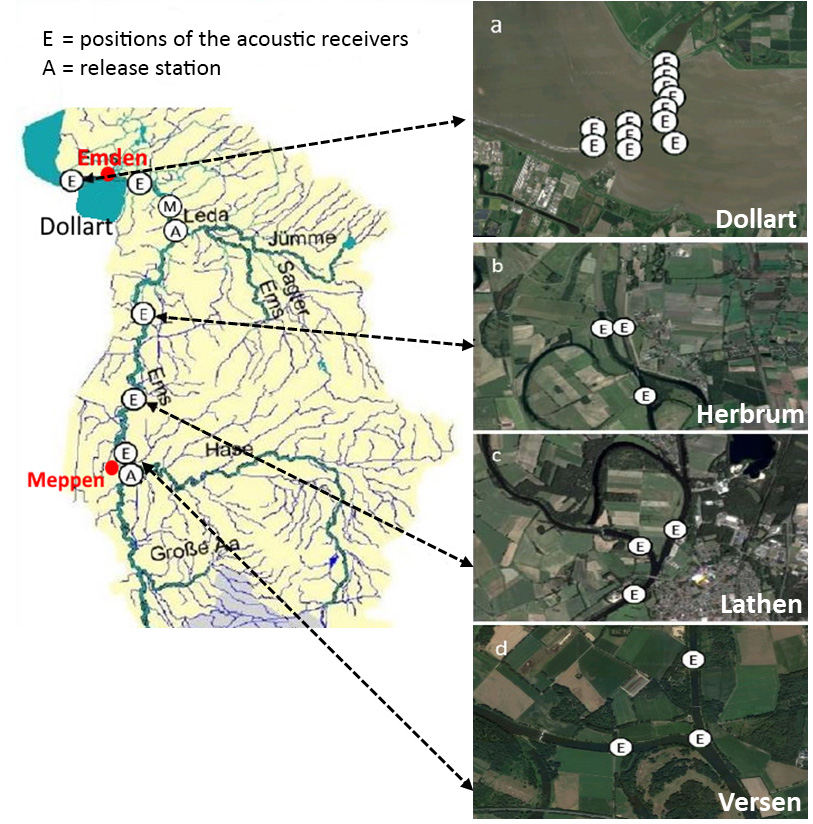The European eel is rated critically endangered. The EU's declared aim is therefore to ensure to help increase the number of eels migrating from our inland waters to the sea so that they can reproduce. However, empirically recording this is complex and is often based on modeled estimates. But how realistic are the assumptions?
The European eel spends the majority of its life as a juvenile, so-called yellow eel in inland and coastal waters. Only towards the end of its life it leaves these waters for a long journey to the Sargasso Sea in the northwest Atlantic as a silver eel, ready to reproduce and thus complete the cycle of life. In recent decades, the number of juvenile fish, known as glass eels, on Europe's coasts has collapsed by more than 99% in some places. The EU and its member states have therefore decided to take measures to improve the situation.
The central element of the European Eel Regulation, with the aim of restoring the stock, is to increase the number of out-migrating silver eels from inland and coastal waters. This is intended to increase the effective number of spawners and consequently increase the number of glass eels. However, because it is not always possible to empirically determine exactly how many silver eels actually migrate, models have been developed in order to generate estimated values based on certain input parameters.
In German river basin districts, the German Eel Model IIIc (GEM) is used. This is a demographic model that calculates the theoretical production of silver eels in a river basin based on data on natural recruitment and stocking of juvenile eels, natural and anthropogenic mortality as well as growth and age-dependent emigration rates. The problem is that the input parameters are often subject to considerable uncertainty and naturally have a strong influence on the results of the model calculations, which can lead to significant deviations from the actual number of migrating eels and thus to an incorrect assessment of the effectiveness of conservation measures. In the BALANCE project, the Thünen Institute therefore worked closely with a commercial fisherman for a period of two years in order to record eel migration from the River Ems and compare it with the model estimates.
329 tagged eels
Data for this study was collected using a catch-recapture-method combined with a telemetry study. For this, the scientists installed a receiver network in the Ems, equipped 329 silver eels with small acoustic transmitters and released them above the catching site. The ratio of tagged to untagged fish in the fishing gear was then used to calculate the total escapement in the observed river area. Additionally, the network of acoustic receivers in the river system registered the tagged fish swimming past the net, in order to further validate the results of the catch-recapture method. In addition, the network provided information on the behavior, migration route and migration speed of the animals.
After two years, a total of 4630 eels were caught at the catching site under investigation and almost 2500 of these were classified as migrating silver eels. The scientists compared the information thus generated on silver eel migration from the Ems with the GEM model predictions for the Ems.
Model overestimates actual eel migration
The research project also provided valuable insights for the discussion on closed fishing seasons for eels: The main migration period for silver eels in 2020/2021 extended from mid-September to the end of January and in 2021/22 from mid-September to February. The start of the migration correlated with falling temperatures and increasing rainwater runoff in the fall, with current velocity in particular playing an important role in the migration dynamics.
However, the central finding of the project is alarming: the actual migration of silver eels from the Ems is significantly lower than assumed. The outmigration figures collected are only 17 percent of the values calculated by the GEM for the same area. The modeled estimate therefore exceeds the real outmigration by a factor of about six. A systematic error in the selection of input parameters and/or incorrect assumptions of the model itself are possible explanations for this. In order to improve the implementation of German eel management, the Thünen researchers therefore urgently recommend validating the modeled GEM results for other relevant water bodies.
Previous evaluations of the GEM and other demographic models have often overestimated the out-migration of eels. This raises the question of whether this type of model is suitable for accurately reflecting the biological reality of local populations in complex habitats such as river systems. Together with international partners, the Thünen Institute is therefore continuing its research into solutions to enable suitable data, precise stock assessment and thus the best possible management of this ecologically and economically important fish species.
Download
- Final report (in German)Blankaalabwanderung in der niedersächsischen Ems: Quantitative Untersuchungen zur Verbesserung von Management, Bewirtschaftung und Schutz des Europäischen Aals 6 MB
Source
The article “Fewer eels than estimated” was published in December 2023 in the Thünen magazine Wissenschaft erleben 2023/2 (page 4/5).
Further publications
- 0
Höhne L, Pohlmann J-D, Freese M (2023) Minimally invasive collection of biometric data including maturation stage on European Eel using photography. Mar Coastal Fish 15(2):e10239, DOI:10.1002/mcf2.10239
- 1
Höhne L, Freese M, Pohlmann J-D, Diekmann M, Fladung E, Huisman JBJ, Hanel R, Marohn L (2023) Overestimating management progress - modelled vs. monitored silver eel escapement in a North Sea draining river. ICES J Mar Sci 80(7):1936-1948, DOI:10.1093/icesjms/fsad122









